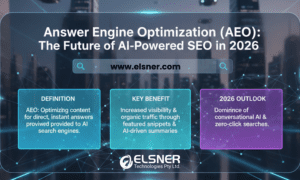Introduction:
In the dynamic world of digital marketing, the landscape of SEO algorithms is in a perpetual state of evolution. As we step into 2024, staying ahead of the curve is not just an option; it’s a necessity for anyone looking to harness the power of search engine optimization effectively. In this comprehensive guide, we’ll delve into the key aspects of the evolving SEO algorithms, providing you with the insights you need to navigate the complexities of 2024.
Understanding the Core of SEO Algorithms:
At its essence, SEO is the art and science of optimizing digital content to rank higher on search engine results pages (SERPs). However, achieving and maintaining high rankings is not as simple as it once was. SEO algorithms, the intricate formulas that search engines use to determine rankings, are becoming increasingly sophisticated.
In the past, SEO was often synonymous with keyword stuffing and backlink quantity. However, modern algorithms have evolved to prioritize a more nuanced set of factors. User experience, content quality, and the overall relevance of the information presented are now at the forefront of SEO considerations.
User-Centric SEO:
A Paradigm Shift:
2024 marks a notable shift toward user-centric SEO. Search engines are placing greater emphasis on delivering results that align with user intent and satisfaction. Consequently, creating content that not only incorporates relevant keywords but also genuinely addresses user queries has become paramount.
User signals, such as click-through rates, bounce rates, and time spent on a page, are increasingly influential in determining a website’s ranking. As a result, businesses and content creators must focus not just on attracting visitors but on providing a seamless and engaging user experience.
Artificial Intelligence (AI) and Machine Learning (ML):
Driving SEO Advancements:
In 2024, the integration of AI and ML into SEO algorithms has reached new heights. Search engines now use machine learning models to analyze vast amounts of data and make real-time adjustments to their algorithms. This dynamic approach allows search engines to adapt to changing user behaviors and preferences more efficiently.
For SEO practitioners, this means a departure from static optimization strategies. Instead, staying current involves understanding how AI interprets content and optimizing accordingly. AI-driven algorithms can now comprehend context, semantics, and even user sentiment, making content relevance more critical than ever.
E-A-T Principle:
Expertise, Authoritativeness, Trustworthiness:
Google, in particular, has been vocal about its commitment to ensuring high-quality content reaches its users. The E-A-T principle—Expertise, Authoritativeness, Trustworthiness—has become a cornerstone of Google’s algorithm updates. Websites that demonstrate expertise in their field, authoritative content, and a trustworthy reputation are rewarded with higher rankings.
To align with the E-A-T principle, businesses and content creators should focus on showcasing their expertise through well-researched content, building authority through reputable backlinks, and maintaining transparency to establish trust with their audience.
Mobile-First Indexing:
A Non-Negotiable Priority:
As mobile device usage continues to dominate internet traffic, search engines have pivoted to mobile-first indexing. This means that Google and other search engines primarily use the mobile version of a website for indexing and ranking. Websites that are not optimized for mobile devices risk plummeting in the rankings.
To thrive in the mobile-first era, ensure your website is not only mobile-friendly but provides an exceptional user experience across various devices. Responsive design, fast-loading pages, and intuitive navigation are critical factors in mobile-first SEO success.
Video Content and Visual Search:
Emerging SEO Frontiers:
In 2024, the significance of video content and visual search in SEO cannot be overstated. Search engines are increasingly favoring video results, and platforms like YouTube have become powerful search engines in their own right. Integrating video content into your SEO strategy is no longer optional but a strategic imperative.
Visual search, powered by technologies like image recognition, is also gaining prominence. Optimizing your visual content for search engines involves using descriptive file names, alt text, and incorporating relevant keywords to enhance visibility in image searches.
Privacy Concerns and Secure Connections:
SEO Considerations:
The growing emphasis on user privacy has prompted search engines to prioritize websites with secure connections. HTTPS has become a ranking factor, and websites without SSL certificates may face lower rankings. In 2024, securing your website with HTTPS is not just about user trust; it’s an SEO necessity.
Moreover, privacy-focused search engine features are gaining popularity. DuckDuckGo, known for its commitment to user privacy, has seen increased adoption. Considering these trends, businesses should be mindful of user privacy concerns and prioritize secure connections to maintain SEO competitiveness.
Core Web Vitals:
The Crucial Metrics:
Google’s Core Web Vitals, a set of user-focused metrics, have become pivotal in SEO assessments. These metrics include loading performance, interactivity, and visual stability. Websites that provide a seamless and enjoyable user experience, as measured by Core Web Vitals, are rewarded with higher rankings.
Optimizing for Core Web Vitals involves addressing issues such as page speed, minimizing unnecessary scripts, and ensuring smooth transitions between page elements. Prioritize these metrics to enhance both user experience and search engine rankings.
Local SEO:
A Continued Focus:
Local SEO remains a cornerstone for businesses with a physical presence. Search engines prioritize delivering locally relevant results, making local SEO an indispensable part of any comprehensive strategy. Ensure your business information is accurate across online directories, and encourage customer reviews to boost your local SEO efforts.
Voice Search Optimization:
A Growing Trend:
With the proliferation of voice-activated devices, voice search is on the rise. Optimizing for voice search involves understanding natural language queries and creating content that aligns with conversational search patterns. Long-tail keywords and FAQs can be particularly effective in catering to voice search queries.
The Future of SEO:
Continuous Adaptation:
As we navigate the evolving landscape of SEO algorithms in 2024, one thing remains certain: adaptability is key. The intersection of AI, user-centricity, and emerging technologies will continue to shape the future of SEO. Successful practitioners will be those who embrace change, prioritize user experience, and stay informed about the latest industry developments.
Conclusion:
Mastering the evolving landscape of SEO algorithms requires a multifaceted approach. Embrace user-centricity, leverage the power of AI and ML, prioritize mobile optimization, and stay attuned to emerging trends like visual search and Core Web Vitals. By understanding and implementing these key aspects, you’ll be well-equipped to navigate the complexities of SEO in 2024 and beyond.



































